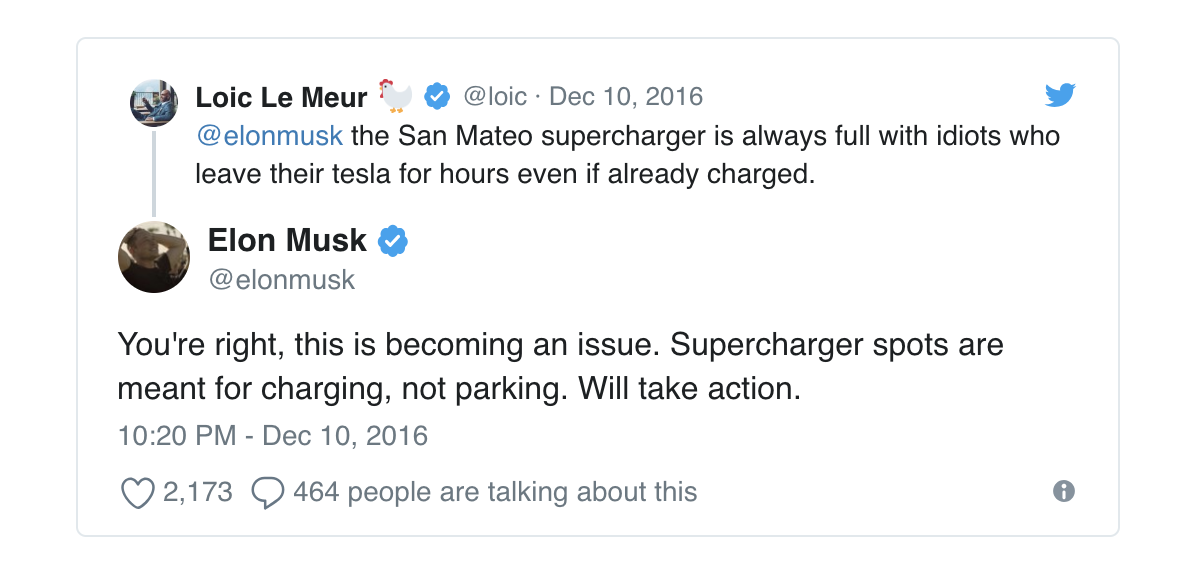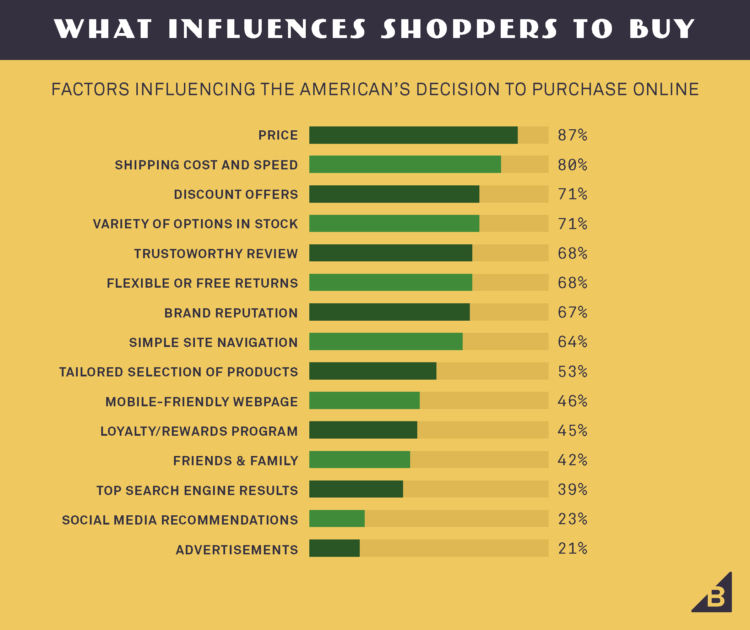When you think about businesses that are known for providing extraordinary customer service like Zappos, Amazon or Chick-Fil-A, they share a common trait. They’re obsessed with their customers. For these brands, customer service isn’t just a department within the organization, it’s the center of their entire company culture and plays a role in nearly everything they do. And it has paid off big time.
For instance, Chick-Fil-A’s customer service is so noteworthy it spawned countless memes and is one of the keys to them generating more revenue per restaurant than any other fast food chain in the U.S.
The brands mentioned above aren’t just shaping the customer service experience for their customers. They’re turning excellent customer care into an expectation for all businesses. For example, companies like Zappos and Amazon have made hassle-free returns and fast shipping two of the most influential factors for online shoppers.
Even though it costs them more money to offer faster shipping options and free returns, they’re willing to accept it because it makes the buying process more convenient for customers.
The question is, how can you follow in their footsteps? How do you build a customer-oriented culture? Here are five tips and lessons from brands that have done it successfully.
Are you ready to deliver Friction-Free Customer Service? Capture your customer’s entire journey in a way a support ticket or traditional help desk never could. Discover Kayako Single View
1. Make everyone interact with customers
It’s impossible to truly understand the needs and wants of your customers unless you talk to them. However, oftentimes the only teams that interact with customers are customer service/support and sales.
As a result, the rest of the company relies on information from those teams in order to understand their company’s customers. While getting this feedback via word of mouth can be helpful, there’s a big difference between being on a phone call with a customer voicing their opinions of your products, and getting a second-hand account of it from a customer service rep.
The solution? Encourage everyone in your organization to interact with your customers. Marketing software company Ahrefs is a perfect example of putting this approach in action.
Their head of marketing, Tim Soulo, made a rule that you can’t be hired to the marketing team, you can only be promoted into it. In order to work in Ahref’s marketing department, you have to start out as a member of their customer support team, and eventually, get promoted to the marketing team.
He doesn’t do this as a “test” or trick. By starting out in the customer support department, you get a unique insight into the ins and outs of your customers that you can’t get elsewhere. After answering customer emails and resolving support tickets for a few months, Ahref’s marketers have a much better understanding of how their customers think, which helps them create content, develop marketing messages and speak to the issues they know their customers experience.
You don’t have to use the exact same approach as Ahrefs, but you can borrow from the concept. Let your employees go through customer service training. Have everyone attend events and conferences your company hosts, so they can interact and talk with your customers. Seemingly little things like this become the building blocks of a customer-oriented culture.
2. Make it happen from the top down
The “do as I say, not as I do” approach doesn’t really play well when you’re running a business. You can’t expect your entire organization to put customers first if leadership doesn’t. A company-wide email from the CEO expressing the brand’s dedication to customer service is meaningless if their actions don’t match.
Since it’s unlikely that your C-suite is going to spend hours taking customer service calls, one great way to implement a top-down customer service approach is through social media. For instance, Elon Musk is one of the most vocal CEOs there is, and he’s very active on Twitter. But he doesn’t just promote the newest Tesla model or send generic “I’m so proud of my team” Tweets. He actively engages with customers.
Back in 2016, a customer Tweeted about their frustrations about the charging stations near him. Most companies would’ve either ignored the message or had the company Twitter handle reply. But Musk took it upon himself to acknowledge the issue and let the customer know he’s on it.
About a week after that interaction, Tesla made an announcement:
“… we understand that it can be frustrating to arrive at a station only to discover fully charged Tesla cars occupying all the spots. To create a better experience for all owners, we’re introducing a fleet-wide idle fee that aims to increase Supercharger availability.”
When your CEO is this dedicated to customers, it trickles down throughout the organization. Now, when Musk makes statements about the company’s commitment to customer service, it doesn’t just sound like a marketing ploy or gimmick because he’s leading by example.
You can do the same thing by encouraging leadership across the entire department to listen and engage with customers as often as possible.
3. Reward great customer service
Let’s face it, people are more likely to do something if they have an incentive. And while you need to be careful to make sure your team isn’t only being nice to customers to get a prize, rewarding people for going above and beyond shows that your company really does value customers.
Take a second and think about what your company rewards. A lot of it is likely based on meeting a set goal or KPI. Whether it’s meeting sales goals, reducing churn or cutting the budget, it’s usually things that have some sort of tangible value.
But what about employees that go out of their way to do something for the customer? Let’s look at an example from Trader Joe’s. One winter, an 89-year old man was snowed in his home in Pennsylvania. His daughter was worried he wouldn’t have food to last him through the snowstorm, and he wasn’t able to go out to the grocery store himself. So she called around to different stores to see if anyone could deliver groceries to him.
After hearing no after no, she eventually called a local Trader Joe’s. And while the employees told her they don’t do home deliveries, they chose to make an exception due to the circumstances. Within 30 minutes, the employees showed up to her father’s house with the groceries. And to take it one step further, they did it all for free.
There isn’t a metric to measure the satisfaction they provided to that customer, but by acknowledging employees that focus on helping customers, rather than just the company, you reinforce your commitment to being a customer-centric brand.
And when you share those types of stories with the rest of your company, it motivates others to start thinking of what they can do to provide better customer service as well.
4. Weave customer service into everything you do
Building a customer-oriented culture means the consumer is at the forefront of everything you do. Whether it’s hiring, setting goals, planning events or new products, the customer has to be considered throughout the decision-making process.
Consider TD Bank. Their slogan is “America’s most convenient bank.” This isn’t just a tagline they use to attract new customers; it’s a core piece of their business. For example, one of their biggest selling points is their business hours. Most banks are open Monday-Saturday (and close early on Saturdays), but TD Bank is open seven days a week and some locations close as late as 8 PM.
While there are likely some financial benefits to being open longer than other banks, you can tell they considered the customers when they made the decision to be open on Sundays. You’ve probably experienced the frustration of having to wait until Monday or readjust your entire schedule to make it to the bank before they close. TD Bank catered to those specific customer needs and made it a core part of their business practices.
5. Be willing to let go of employees that don’t fit the culture
Up to this point, all the tips we’ve given have been fairly easy to implement. But let’s talk about the not-so-pretty side of building your company culture.
As much as you try to embed great customer service into the DNA of your company, there will always be team members who simply don’t follow the vision. And when your goal is to build a customer-oriented culture, you simply can’t afford to have toxic employees stick around and potentially rub off on the rest of the team. In fact, one study found that good employees are 54% more likely to quit when they have to work alongside toxic employees.
In theory, it sounds simple. If someone isn’t a great culture fit, and is toxic, you let them go. However, the challenge comes when these people are your top performers. What happens when your best salesperson is friendly to customers on the phone in order to get the sale, but as soon as they hang up they make jokes about them? Are you willing to let them go and lose revenue in order to build a customer-focused culture?
Your answer is what separates the brands that truly want to build a customer-oriented culture from those that just say it.
“Put the customer first” is more than a buzzphrase
The only way to build or change your company culture is through action. Simply saying you’re a customer-focused brand doesn’t make it true. Take notes from the brands we mentioned, and put all their best practices into action. Over time, you’ll start to see a shift in your company culture.



